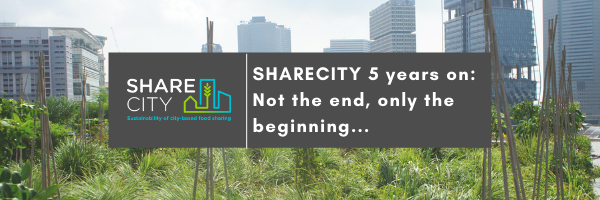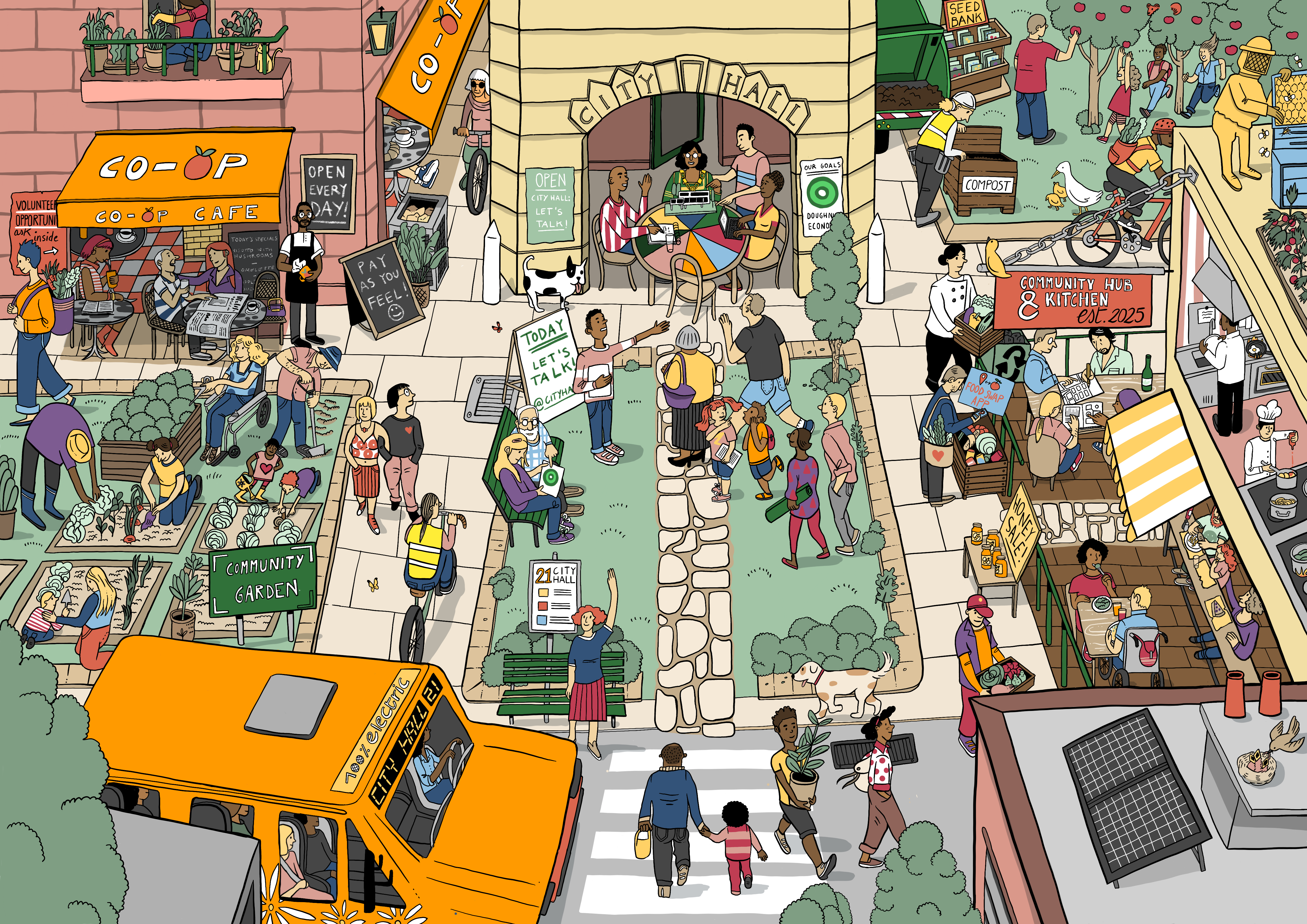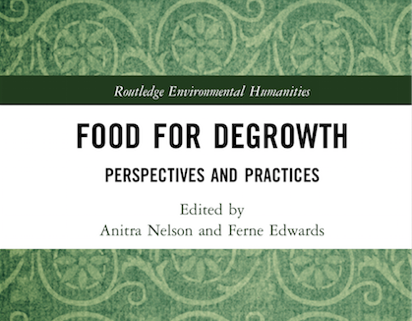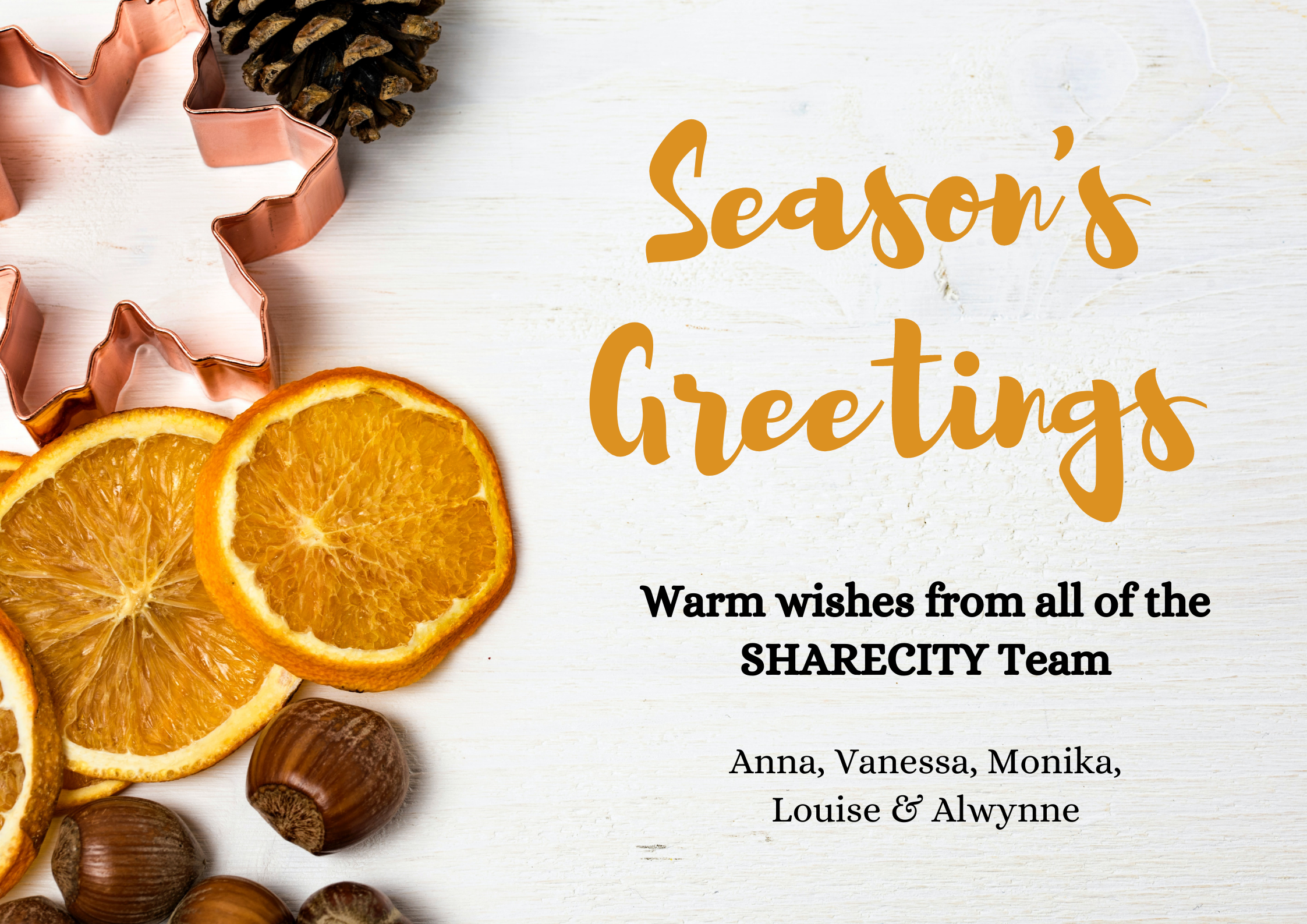Feeling out alternative food movements : food justice, food sovereignty, and the visceral
Published by Oona Morrow on the 28th July 2016.

The second food studies reading group explored themes of food justice, food sovereignty and viscerality (once again!) in papers by Alison Alkon and Teresa Mares, Julie Guthman, and Allison Hayes-Conroy and Jessica Hayes-Conroy. These three papers complemented each other well. Alkon and Mares use a food sovereignty framework to critically evaluate community food security and food justice initiatives in the US; Guthman reflects on her students’ work in such initiatives and their desire to “bring good food” to economically disadvantaged communities; and the Hayes-Conroy sisters offer a close examination of the visceral with respect to the lack of socio-cultural diversity within the US Slow Food movement, their work brings the critical question “Whose desire is this?” present in all the papers into a moleculised, biosocial realm by examining how food may feel differently in different bodies. All three papers took a critical turn to look beyond the basic provisioning of “good food” (and what does this really mean for whom?) to examine the motivations of: who desires these actions, who has the power to enact them, and at what juncture should people focus their attentions to effect transformational change towards food justice?
Alkon and Mares’ ‘Food sovereignty in US food movements’ provided an excellent source of terms – community food security, corporate food regime, neoliberal subjectivies – were but a few referred to in the text. Their definition of a food sovereignty approach draws on work by Desmarais (2007) to prioritize production for local and domestic markets, demand fair prices for food producers, and emphasise community control over productive resources such as land, water and seeds. Food sovereignty moves beyond food security to advocate communities’ rights to produce for themselves rather than remain dependent on international commodity markets. Alkon and Mares list seven food sovereignty principles (p.349): agrarian reform, protection of natural resources, reorganisation of food trade to prioritise local and domestic markets, social peace, democratic control and opposition to influence of multilateral institutions and speculative capital on the food system. The authors also state that a food sovereignty framework explicitly underscores direct opposition to the corporate food regime which happened to not be the outcome of article’s case studies. Discussion questions included: Is it fair to evaluate the case studies on the goal of food sovereignty even if they are not aspiring to it? Is food sovereignty really the antidote to neoliberalism? Can some of the community driven, self-help tendencies associated with neoliberalism also be identified in actual food sovereignty movements? Are all markets bad? What are folks trying to achieve when they turn to markets? And aren’t there different kinds of markets ?
Guthman’s ‘Bringing good food to others’ explores how current food activism emphasizes the whitened desires of volunteers, reformers, and missionaries who wish “save” others from making poor food choices, over the actual needs and wishes of the communities they serve. The result is a moral and cultural context in which white desires for local, organic, agrarianism, and alternative food become the “right” desires, and crowd out other forms of food engagement and activism. She discusses the concept of white spaces where cultural codings are performed at markets, and “how race ideologies combine with other ideological elements to ‘shape space, give meanings to places, and condition the experience of embodied subjects emplaced and moving through the material world’” (p.434). Guthman identifies these white food presumptions as: the aesthetic of organic, natural food; the agrarian imaginary that celebrates the experience of ‘putting your hands in the soil’ or ‘getting your hands dirty’; and the notion that promoting alternatives (rather than changes in policy) are the best strategy for transforming the US system. She draws on Poppendieck’s Sweet Charity? to drive this message home, to profess that she remains “struck by the disjunction between what alternative food activists do and what food desert residents seem to want.” Our discussion here revolved around such as questions as: Food is connected to so many different social and environmental issues, which makes it an appealing starting point for intervening in broader social and political struggles. But what can food really accomplish? Why are people working on bringing good food to others when they should really be working on policy that would make food good, fair, and accessible to all? What are some of the racialized aspects of food sharing? Does this practice or discourse of sharing work to “hail” a particular subject? Can you think of particular practices, beliefs, ways of doing that make the food spaces or practices you participate in ‘white’?
Hayes-Conroy and Hayes-Conroy in ‘Visceral Difference: Variations in Feeling (Slow) Food’ explore how “food and food movements come to feel differently in different bodies as a result of the inner-connected biological and social forces” (p.2956). Their starting point is the recognition that that alternative food spaces, foods, and practices can have a chilling effect on people of color. The Hayes-Conroys seek to develop new understandings as to why some people participate in alternative food practices while not others. Here, the visceral is defined as “as the bodily realm in through which feelings, sensations, moods and so on are experienced”, where the biosocial is a way of understanding biological and social forces as internally combined. These approaches attune us to the ways that both tangible (sugars, fats, spices) and intangible food ingestions (ideas, beliefs, values) are experienced. This visceral theoretical space is exciting as it crosses boundaries between the material, symbolic, discursive, and subjective to recognise that not everyone feels the same or has the same histories and beliefs. This piece merged and bridged vital materialist, structural, and post-structural understandings of social difference as evidenced here:
Contrary to colloquial depictions of viscerality as knee-jerk response, we understand visceral difference (or, variations in bodily feeling) as development in their immediacy. That is, an in-the-moment feeling builds from a seemingly chaotic intersection of new(er) and old(er) factors influencing that moment’s unique molecular mixing and moving in the body: things like a smell, a comment, weather, prior moods, a new theory, a recurrent idea, a headache, a memory, a pat on the back. Herein we might also add structures like race, gender, and class; these can be seen as key fact so in forming visceral difference both because they influence how bodies can and do develop on a chemical/molecular level and because the social categories themselves can be ‘ingested’, generating mixing and movings of molecules, and ultimately shaping bodily feeling (2960).
The paper also contributed to understanding how taste and distinction reproduce not only social class, but other forms of social difference, but contra Bourdieu this is not at all structurally fixed when we understand taste as a visceral bio-social context dependent experience. Discussion questions included: How close can we get to the visceral through verbal communication? What are some of the ways you viscerally feel food – discourses, practices, spaces, foods? What does this tell you about your identity, social position, community, belonging? What missionary tendencies does Slow Food exhibit in their desire to educate palates for social change? What bodily wisdom is being overlooked?
For SHARECITY these papers provide important reminders of the importance of reflexivity in fieldwork and analysis of alternative food movements, the contextual considerations of what theoretical frameworks may be suitable to apply to analysis, and the possible depths of analysis by applying innovative and holistic methodologies to more fully explore food justice across societies and cultures. As convenors of the Reading Group, we also became aware that we need to choose more geographically-diversed and sourced readings! Possible topics for next month’s reading group include non-human natures, eco-socialism, political economy, economic diversity and varieties of capitalism, and vibrant materialism.
Thank you to everyone attended – it was great to see people attend on what appears to be a month of sunshine and holidays! More scholars are welcome as always so please feel free to spread the word!
Ferne Edwards and Oona Morrow, SHARECITY
The next Reading Group is:
12:45pm – 2:00pm, Thursday, August 11
The Freeman Library, Museum Building, Trinity College Dublin
We’ll be in touch about possible readings very soon! If you know of someone who would like to attend the Reading Group or have any questions, please email Ferne or Oona at edwardsf@tcd.ie or morrowo@tcd.ie.
References:
Alkon, A. & Mares, T. (2012) Food sovereignty in US food movements: radical visions and neoliberal constraints, Agriculture and Human Values, 29: 347–359
Guthman, J. (2008) Bringing good food to others: investigating the subjects of alternative food practice Cultural Geographies, 15: 431-446
Hayes-Conroy, A. & J. Hayes-Conroy (2010) Visceral difference: variations in feeling (slow) food, Environment and Planning A, 42: 2956-2971.
© 2015 - 2024 ShareCity | Web Design Agency Webbiz.ie








